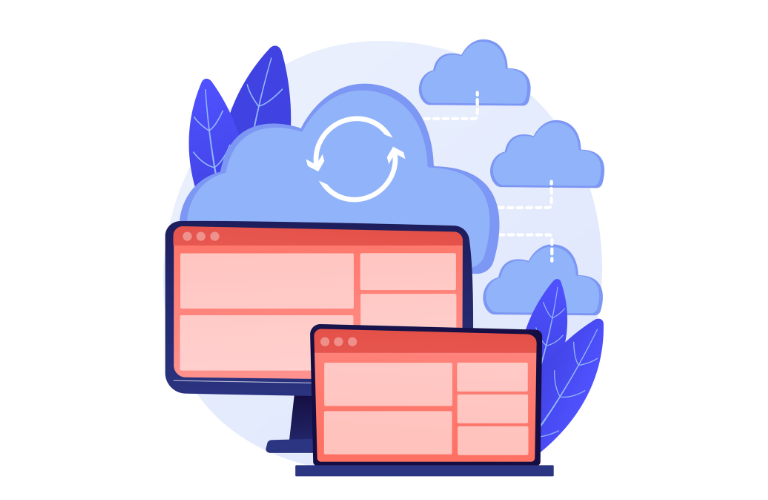In today’s fast-paced digital world, keeping your Laravel applications running smoothly is crucial. Downtime or slow performance can cost businesses thousands in lost revenue and damaged trust. That’s where a Laravel Automated SLA Monitoring API comes into play. This powerful setup allows constant checks on service level agreements (SLAs), quick alerts for issues, and easy integration with dashboards. Whether you’re dealing with internal databases or third-party APIs like payment gateways, this guide walks you through building it step by step.
Imagine launching a feature only to find out a dependency is lagging, spiking response times beyond your 99.9% uptime promise. Frustrating, right? A Laravel Automated SLA Monitoring API solves this by automating health checks every minute, flagging violations instantly, and visualizing trends in a simple dashboard. By the end, you’ll have actionable code snippets, time-saving shortcuts, and tips to handle real-world pain points like slow external services.
Table of Contents
Why You Need a Laravel Automated SLA Monitoring API
Service level agreements define what “good enough” looks like—think 200ms response times or 99% success rates. But manual checks? They’re outdated and error-prone. A Laravel Automated SLA Monitoring API shifts this to automation, catching issues before users notice.
This approach shines for Laravel developers because it leverages the framework’s strengths: queues for non-blocking checks, Eloquent for data storage, and notifications for alerts. No more firefighting at 2 AM—get Slack pings instead.
Key benefits include:
- Proactive Issue Detection: Spot SLA breaches early, reducing mean time to resolution (MTTR) by up to 50%.
- Scalability Across Dependencies: Monitor internal queues alongside external APIs like Stripe or AWS S3.
- Cost Savings: Avoid penalties from SLA violations; one study shows automated monitoring cuts downtime by 30%.
For e-commerce sites or SaaS platforms, this means happier customers and fewer support tickets. If your app relies on microservices, it’s a game-changer.
Core Concepts: SLAs in Laravel Context
SLAs aren’t just contracts—they’re measurable targets. In Laravel, this translates to metrics like API latency, error rates, and uptime. Your Laravel Automated SLA Monitoring API will define these as rules: if a third-party call exceeds 500ms three times in a row, it’s a breach.
Start simple. Use Laravel’s scheduler for cron-like checks without external cron jobs. Store results in a dedicated model for historical analysis. This setup handles both internal (e.g., database connections) and external (e.g., OAuth endpoints) dependencies seamlessly.
Pain point: Overloaded queues slowing checks?
Solution: Offload to Laravel Horizon for better visibility and auto-scaling.
Setting Up Your Laravel Project
Kick off with a fresh Laravel install. Run this in your terminal:
composer create-project laravel/laravel sla-monitor-api
cd sla-monitor-api
php artisan key:generateAdd essential packages for efficiency. For HTTP requests to third-parties, grab Guzzle:
composer require guzzlehttp/guzzleFor notifications, Laravel’s built-in system covers email and Slack. If you need database storage for checks, create a migration:
php artisan make:migration create_sla_checks_tableIn the migration file, define columns like service_name, response_time, status, timestamp. Run it:
php artisan migrateShortcut: Use Laravel Shift for automated upgrades if you’re on an older version—saves hours debugging compatibility.
Building the Laravel Automated SLA Monitoring API Endpoints
Your API needs endpoints to trigger checks and retrieve status. Start with routes in routes/api.php:
Route::post('/sla/check', [SlaController::class, 'performCheck']);
Route::get('/sla/status/{service}', [SlaController::class, 'getStatus']);Create the controller:
php artisan make:controller SlaControllerIn SlaController.php, implement the check logic. For a third-party dependency like a weather API:
use Illuminate\Http\Request;
use GuzzleHttp\Client;
use App\Models\SlaCheck;
public function performCheck(Request $request)
{
$service = $request->input('service'); // e.g., 'weather-api'
$slaThreshold = 300; // ms, adjust per service
$client = new Client();
$start = microtime(true);
try {
$response = $client->get('https://api.weather.com/v1/current', ['timeout' => 5]);
$duration = (microtime(true) - $start) * 1000;
$status = $duration <= $slaThreshold ? 'pass' : 'fail';
SlaCheck::create([
'service_name' => $service,
'response_time' => $duration,
'status' => $status,
'timestamp' => now()
]);
return response()->json(['status' => $status, 'duration' => $duration]);
} catch (\Exception $e) {
// Log and mark as fail
SlaCheck::create(['service_name' => $service, 'status' => 'fail', 'error' => $e->getMessage()]);
return response()->json(['status' => 'fail'], 500);
}
}For internal checks, like database health:
public function checkDatabase()
{
$start = microtime(true);
DB::select('SELECT 1');
$duration = (microtime(true) - $start) * 1000;
// Store and compare to threshold
}This endpoint now powers your Laravel Automated SLA Monitoring API. Test it with Postman: POST to /api/sla/check with JSON {“service”: “weather-api”}.
Pro tip: Use Laravel’s API resources for cleaner JSON responses—wrap your data in a resource class to avoid exposing raw models.
Automating Constant SLA Checks with Laravel Scheduler
Manual triggers won’t cut it. Automate with Laravel’s task scheduler. In app/Console/Kernel.php:
protected function schedule(Schedule $schedule)
{
$schedule->call(function () {
// Call your controller or a dedicated job
app(SlaController::class)->performCheckForAllServices();
})->everyMinute(); // Or everyFiveMinutes for less load
}Define performCheckForAllServices() to loop over config-defined services:
// config/services.php
return ['weather-api' => 'https://api.weather.com/v1/current', 'payment' => 'https://api.stripe.com/v1'];
// In controller
public function performCheckForAllServices()
{
foreach (config('services') as $name => $url) {
$this->performCheck(new Request(['service' => $name]));
}
}Run the scheduler via cron:
* * * * * cd /path-to-your-app && php artisan schedule:run >> /dev/null 2>&1Time-saver: Integrate Laravel Horizon (composer require laravel/horizon) for a dashboard to monitor these jobs. It auto-retries failed checks and shows queue depth—perfect for high-traffic apps.
For third-party dependencies, add retries with exponential backoff:
$client->get($url, ['retry' => 3, 'delay' => 100]);This handles flaky services without false alarms.
Implementing Alerting for SLA Breaches
Alerts turn data into action. Use Laravel’s notification system. Create a mailable or notification:
php artisan make:notification SlaBreachAlertIn SlaBreachAlert.php:
use Illuminate\Notifications\Messages\SlackMessage;
public function toSlack($notifiable)
{
return (new SlackMessage)
->content('SLA Breach Detected!')
->attachment(function ($attachment) {
$attachment->title('Service: ' . $this->service, url('/sla/status/' . $this->service))
->fields([
'Duration' => $this->duration . 'ms',
'Threshold' => $this->threshold . 'ms',
'Time' => $this->timestamp,
]);
});
}Trigger it in your check method when status is ‘fail’:
if ($status === 'fail') {
$user = User::where('role', 'admin')->first(); // Or use a dedicated notifiable
$user->notify(new SlaBreachAlert($service, $duration, $slaThreshold));
}Configure channels in config/notifications.php or user preferences. For email:
public function toMail($notifiable)
{
return (new MailMessage)
->line('Your ' . $this->service . ' SLA was breached.')
->action('View Dashboard', url('/dashboard/sla'));
}Pain point: Alert fatigue from minor blips? Add thresholds: Only notify after three consecutive fails. Track with a counter in your SlaCheck model.
For advanced alerting, check Laravel Notifications docs.
Integrating with Dashboards for Visual Insights
Raw data is useless without visualization. Build a simple dashboard using Laravel Blade and charts. Install Chart.js via CDN or Laravel Mix.
Create a route:
Route::get('/dashboard/sla', [DashboardController::class, 'index']);In the controller:
public function index()
{
$checks = SlaCheck::latest()->take(100)->get();
$services = $checks->groupBy('service_name');
return view('dashboard.sla', compact('checks', 'services'));
}In resources/views/dashboard/sla.blade.php:
<div class="chart-container">
<canvas id="slaChart"></canvas>
</div>
<script src="https://cdn.jsdelivr.net/npm/chart.js"></script>
<script>
const ctx = document.getElementById('slaChart').getContext('2d');
const chart = new Chart(ctx, {
type: 'line',
data: {
labels: {!! $checks->pluck('timestamp')->map(fn($t) => $t->format('H:i')) !!},
datasets: [{
label: 'Response Time (ms)',
data: {!! $checks->pluck('response_time') !!},
borderColor: 'rgb(75, 192, 192)',
tension: 0.1
}]
},
options: {
scales: {
y: { beginAtZero: true }
}
}
});
</script>Add filters: Dropdown for services, date range picker with Laravel’s Carbon.
For third-party integration, expose API data to tools like Grafana. Use Laravel’s Sanctum for secure access. Learn more about Laravel API authentication.
Time-saver: Use Livewire (composer require livewire/livewire) for reactive updates—no full page reloads. Add @livewire(‘sla-chart’) for instant refreshes every 30 seconds.
Handling Internal and Third-Party Dependencies
Internal checks: Monitor queues with Queue::size(), databases with pings. Example command:
php artisan make:command CheckInternalHealthIn the command:
protected $signature = 'sla:internal-check';
public function handle()
{
$queueSize = Queue::size('default');
if ($queueSize > 100) { // SLA: max 100 pending jobs
// Alert and log
}
// Similar for Redis, cache hit rates
}Schedule it alongside API checks.
For third-parties: Mock in tests with Laravel’s HTTP fakes. Real-world: Track Stripe webhook latency.
$client->post('https://api.stripe.com/v1/charges', [
'headers' => ['Authorization' => 'Bearer ' . env('STRIPE_KEY')]
]);Pain point: Rate limits causing false fails? Cache responses for 5 minutes using Laravel’s Cache facade:
$cached = Cache::remember("sla:{$service}", 300, function () use ($client) {
return $client->get($url);
});This boosts accuracy without hammering endpoints.
Use Cases and Real-World Commands
E-commerce: Monitor payment gateway SLAs to avoid cart abandonments. Command: php artisan sla:check-payment –threshold=200
SaaS Dashboard: Integrate with Nova for admin views. Add a resource for SlaCheck model.
Healthcare App: Ensure HIPAA-compliant logging for audit trails. Use encrypted fields in migrations.
Quick command for bulk setup: Create a seeder for sample services:
php artisan make:seeder SlaServicesSeeder
// In seeder
SlaService::create(['name' => 'email-api', 'url' => 'https://api.sendgrid.com', 'threshold' => 400]);
Run: php artisan db:seed --class=SlaServicesSeederTime-Saving Shortcuts and Best Practices
- Debug Fast: Use php artisan tinker for quick SLA simulations: SlaCheck::factory()->create([‘status’ => ‘fail’]);
- Testing: Write feature tests: $response = $this->postJson(‘/api/sla/check’, [‘service’ => ‘test’]); $response->assertStatus(200);
- Scaling: Deploy with Forge/Vapor for auto-scheduler setup. Monitor costs—Guzzle timeouts prevent endless hangs.
- Security: Rate-limit API endpoints with throttle:60,1 middleware.
- Edge Cases: Handle SSL expiry with Spatie’s uptime-monitor package (composer require spatie/laravel-uptime-monitor).
Explore Laravel Forge for deployments and learn SLA basics from Google’s SRE book.
Wrapping Up: Stay Ahead with Your Laravel Automated SLA Monitoring API
Building a Laravel Automated SLA Monitoring API isn’t just tech—it’s peace of mind. You’ve got constant checks, smart alerts, and a dashboard that turns chaos into clarity. Start small: Implement one service today, scale tomorrow.
FAQs
1. What is a Laravel Automated SLA Monitoring API?
A Laravel Automated SLA Monitoring API is a system built with the Laravel framework to continuously check service level agreements (SLAs) for your application. It monitors metrics like response times, uptime, and error rates for internal and third-party services, sending alerts and integrating with dashboards for real-time insights.
2. Why should I use Laravel for SLA monitoring?
Laravel’s built-in tools, like task scheduling, queues, and notifications, make it ideal for automating SLA checks. It simplifies handling complex tasks like HTTP requests to third-party APIs (e.g., Stripe) and provides scalability with packages like Horizon, saving development time.
3. How do I set up a Laravel Automated SLA Monitoring API?
Start with a fresh Laravel project (composer create-project laravel/laravel sla-monitor-api). Install Guzzle for HTTP requests (composer require guzzlehttp/guzzle), create a migration for storing check results, and define API routes for triggering checks and viewing statuses. Use Laravel’s scheduler for automation.
4. Can I monitor third-party APIs with this system?
Yes, the Laravel Automated SLA Monitoring API can monitor third-party APIs like payment gateways or email services. Use Guzzle to send requests, measure response times, and compare against SLA thresholds. Cache responses to avoid rate limits and false failures.
5. How do I get alerts for SLA breaches?
Laravel’s notification system supports channels like Slack and email. Create a notification class (php artisan make:notification SlaBreachAlert) and trigger it when a check fails (e.g., response time exceeds 300ms). Add logic to avoid alert fatigue, like requiring three consecutive failures.
6. How can I visualize SLA data in Laravel?
Build a dashboard using Laravel Blade and Chart.js. Fetch check data from your database with Eloquent, pass it to a view, and render a line chart showing metrics like response times. For dynamic updates, use Livewire (composer require livewire/livewire) to refresh data without reloading.
7. What are some time-saving tips for building this API?
Use Laravel’s artisan commands for quick setup (e.g., php artisan make:controller SlaController). Test with php artisan tinker for simulations. Deploy with Laravel Forge for automated scheduling. Add Spatie’s uptime-monitor package (composer require spatie/laravel-uptime-monitor) for edge cases like SSL expiry.



